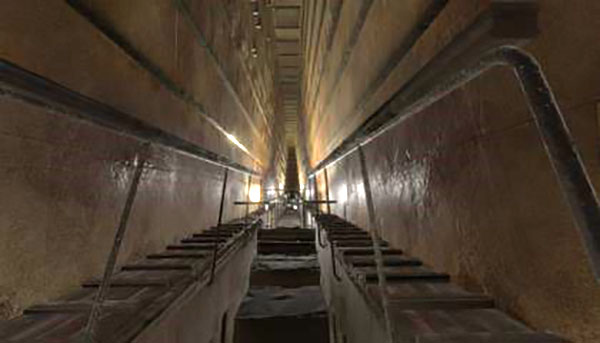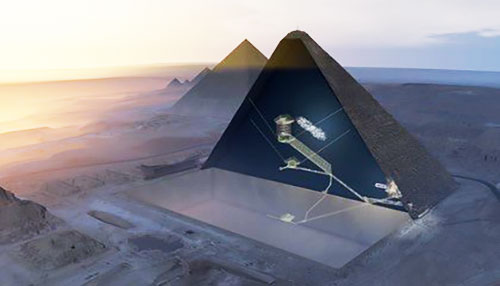Well after coming back from Julian, CA and being clouded out both nights, we are getting anxious for some good nighttime observing. But again the clouds are not cooperating here either and when we got back to the observatory, we were faced with some complaints from the observatory staff, but before getting into that, we should check the schedule for the coming weeks.
This Friday we have the physicist wannabe luncheon and then that night the OCA general meeting with a speaker talking about space weather, so that should be pretty interesting. See you all there! Then Saturday the OCA star party will be possible if the clouds cooperate. Also if you happen to be in town on November 17-18, there will be a great First Light conference at the Huntington Library, dealing with the history of observations from Mt. Wilson. Darn, unfortunately, we will be on travel at that time and can't attend what appears to be a very interesting conference.
Ok, onto the complaint received from the observatory staff members, Astronomer Assistant Ruby and Danny. They complained that they had a very stressful time during our last week 2 night outing to Julian. They said it was not their fault that they woke us up at 11:30 PM, 2:15 AM, and 5:00AM in the morning and needed to go outside. They were stressed out by being in a strange place, in a hotel room where they had to sleep in their crates and were left alone while the rest of the staff went out to great lunches and dinners, strolls through the town and a tour of the Curiosity Peak Observatory. Hmm, what to do; so we offered to double their salaries! They seemed to like that idea, what with all the petting and attention, but their math skills are not that great and didn't realize that two times zero is still zero! Ok, get ready for our next outing probably in the really dark skies of Joshua Tree, CA. We are still trying to find that ideal observing location where we can setup and just wheel out the scope and tripod each night without having to setup and tear down each night. Many of the rooms in Julian are located up flights of stairs and all of the trees, which are nice as trees, but interfere with getting good view of the sky, so it has been hard to find the ideal location there. More about the search in Joshua Tree next time.
 |
| Astronomer Assistants Danny and Ruby confront us about their stressful stay in Julian (Source: Palmia Observatory) |
Speaking of weather interfering with night sky observing, the clouds have not been helpful, but the following image shows you might still be able to find something interesting when you look up. What is that long bright object? Is it a cosmic string? Ok, ok, it is probably not that given that there is expected to be only about one cosmic string, created during the symmetry breaking conditions just after the big bang, per Hubble volume. It probably is just a jet contrail higher up than the low lying clouds and reflecting more sunlight. This just proves again that amateur astronomers who also take up meteorology have twice the likelihood of finding something of interest in the sky.
 |
| Cosmic String observed? -- Maybe not! (Source: Palmia Observatory |
Well, since the clouds are not being very helpful, I've been inside going over again some good textbooks on general relativity and found this very interesting chart showing some actual data measuring the deflection of starlight during the total eclipse of 1922. This chart from Hartle's "Gravity -- An Introduction to Einstein's General Relativity" is becoming one of my favorite textbooks. Initially, I thought that Hartle didn't tackle the tough issues in GR, but now, I see that I was not ready for the tough issues and could barely get through the calculations that he has in his textbook. Now, I really appreciate the textbook and am finally make some more progress in understanding the subject.
 |
| Real (that is messy) star deflection data from 1922 eclipse (Source: Hartle, "Gravity..." |
Anyway, just after our recent total eclipse experience in Wyoming it was neat to see this chart which shows the measured deviation of star positions around the sun visible during the total eclipse of 1922. As many of us noticed as we photographed the eclipse, it was hard to see many background stars due to the bright corona. It is important to notice the outline of the coronas how one must be able to identify and measure the star positions when they are so close to the sun. Secondly, pay attention to the scale factor used to indicate the difference in star positions. That length scale indicates just 1 arc second of position change so the indicated lines should not be interpreted on the same scale as the image. To be able to control all the variables that can affect the telescope dimensions like focal length and alignment, etc., which affects star positions as observed with two images, one taken months before the eclipse and one on the day of the eclipse. Many things on the telescope will change due to the temperature variation and changes that occurred during the shipment of the telescope from one location to the other. Note how the data varies all over the place and it is pretty amazing that anything comes from the measurement.
The other astrophysical topic that came up during our indoor activity was how muons were being used to look inside the Great Pyramid. Recall that muons are subatomic particles that are created in particle accelerators and during interaction between cosmic rays and gas molecules in the atmosphere. See the artists' conception of these showers of particles that result from the one incoming cosmic ray.
 |
| Illustration of cosmic ray muon showers (Source: Anthony Tatum, www.uncw.edu) |
These cosmic rays and resulting high energy particles are the reason why many types of particle physics experiments are driven deep underground so the results of the measurements are not contaminated by these particles. But here in this article from Smithsonian.com, we see that some physicists are using these free high energy particles to look for other unknown chambers and voids inside the Great Pyramid.
 |
| Scientists prepare muon detector at the Great Pyramid (Source: Smithsonian.com, November 5, 2017) |
This is pretty neat and represents a non-destructive way of seeing how the pyramid was constructed and other voids that are not accessible from the staircase that leads up to the King's chamber. I remember, now almost 40 years ago, on my trip through Egypt of walking up this staircase. It was so hot and the air was stifling ad both side of the staircase was filled tightly with visitors, some going up and others coming back down. Once I got to the King's chamber I was so exhausted and perhaps a bit claustrophobic, I exited with only a brief glance at the King's chamber.
 |
| The grand staircase leading to the King's chamber in the Great Pyramid (Source: Smithsonian.com, November 5, 2017) |
So, the incoming random muon showers can be used to detect density differences in the rock structure overhead. After many data collection periods, with incoming muon showers from many difference directions, the density differences can show hidden voids.
 |
| Cartoon showing location of giant void in the Great Pyramid (Source: Smithsonian.com, November 5, 2017) |
Until next time,
If you are interested in things astronomical or in astrophysics and cosmology
Check out this blog at www.palmiaobservatory.com

No comments:
Post a Comment